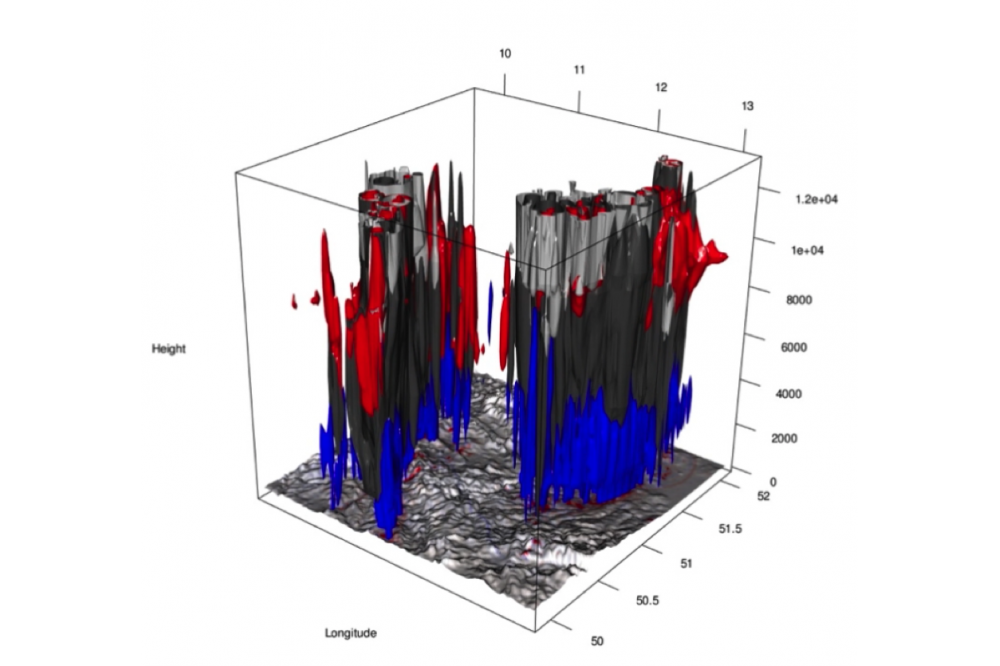Properties and Climate Sensitivity of Convective Activity in Convective Permitting Models
Introduction
Severe convective events have a large impact on our society due to their potential for producing high precipitation intensity showers, hail or lightning (Brendel et al., 2014). These latter three processes usually result in floods or damages on agricultural fi elds or on power network. Policy makers have, therefore, high interest in monitoring convective events. However, due to their complexity and their limited spatial extend the tools to understand or reproduce their climatology are limited.
Methods
Therefore further research is needed, on the one hand, to improve our understanding of convective events and, on the other hand, to develop or evaluate models that reproduce these events. This will allow to not only provide a more realistic climatology of convection for the present-day but also to investigate the evolution of convective events in an altered climate. Different type of models are available to climatologist to model convective events. However, it has been shown that recent dynamical models called convective permitting (CPS) models, which use a horizontal grid-mesh finer than 4 km, have superior skills than statistical or coarser dynamical models. Indeed fine grid-meshes are needed to model correctly the triggering and the development of convective events. In addition, the model needs to represent adequately the interaction of the soil with the planetary boundary layer (lowest part of the atmosphere).
Results
This project aims at (1) evaluating the representation of convective events in a CPS model using a large panel of observations and (2) investigating how altered properties of the climate system may disturb the climatology of convective events:
- (1) The different characteristics of convective events occurring in the area of Thuringia (central Germany) are evaluated for the period 2004-2014. After selecting the days with signifi cant convective activities using a radar dataset, the convective cells are extracted using a tracking algorithm. This allows for deriving the speed, intensities, and frequencies of these convective cells. The climatology of these properties is then compared to the one derived with the dynamical model COSMO5clm1 used at convective permitting scale (~1km). An example of a convective event as model by the COSMO5clm1 is shown in Fig. 1.
- (2) In the future, diff erent properties of the climate system may be altered. In this study, the impact on convective activities of changes in three properties are investigated, namely, the green house gazes, the land use and the soil moisture. These investigations are performed based on a set of sensitivity studies that include one or more altered climate properties. This allows to understand the impact of each altered properties separately and the impact of their combined effects. These sensitivity studies are based on simulations performed with the COSMO5clm1. These two studies are likely to improve our understanding of convective activities in the climate system and to improve the quantifi cation of climate projections uncertainties.




